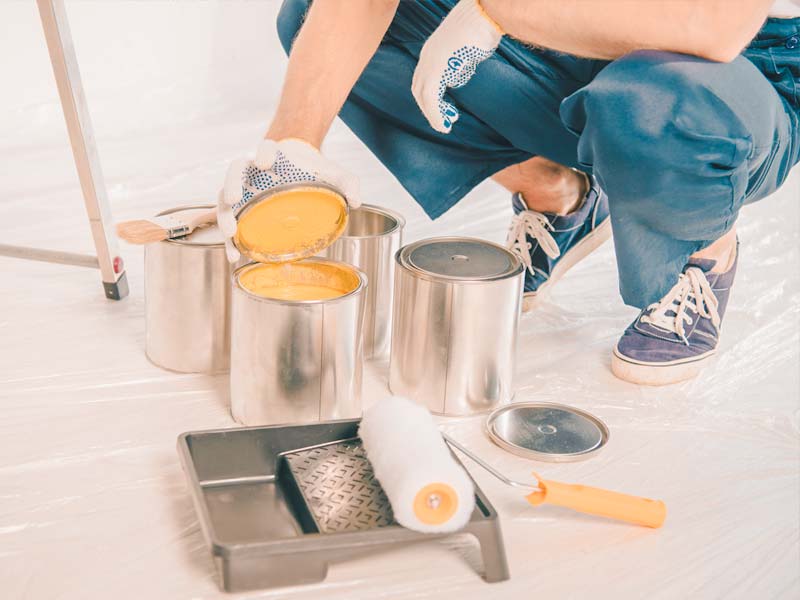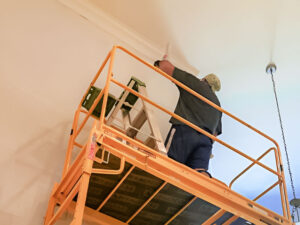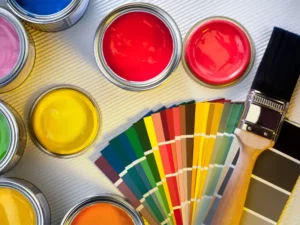-
Hours of Operation: 8:00am – 7:00pm
-
Need Help, Talk to Expert: (713) 489-3811

Interior Painting: Top Issues and How to Avoid Them

Interior painting is a great way to refresh the look of your home and increase its value. However, if not done properly, it can lead to a variety of issues that can be costly and time-consuming to fix.
As a professional painting contractor, we at ProGeneralService Painters have seen our fair share of interior painting challenges. From color selection to surface preparation, there are many factors that can impact the final outcome of a project. In this article, we’ll take a look at the top issues that homeowners and contractors face when it comes to interior painting, and provide some practical tips on how to avoid them.
1. Poor Surface Preparation
One of the most common issues with interior painting is poor surface preparation. This can include not cleaning the walls properly, not repairing any cracks or holes, and not using the right primer. Proper surface preparation is crucial for a successful paint job, as it ensures that the paint adheres properly and lasts longer. To avoid this issue, make sure to clean the walls with a mild detergent and water, and let them dry completely. Fill in any cracks or holes with spackling or joint compound and sand them smooth. Use a high-quality primer that is suitable for the type of paint and surface you are working with.
2. Using the Wrong Paint
Another common issue with interior painting is using the wrong paint. There are many different types of paint available, and each has its own properties and uses. For example, oil-based paints are great for trim and molding, but not recommended for walls. Latex paints are more commonly used for walls, but they can be sensitive to temperature and humidity. To avoid this issue, make sure to choose the right paint for the job and follow the manufacturer’s recommendations for application.
Color Selection
Choosing the right color for your interior painting project can be a daunting task. With so many options to choose from, it can be difficult to know where to start. To make the process easier, we recommend creating a color palette before you start painting. This can be done by collecting samples of colors that you like and placing them together to see how they look.
Another tip is to pay attention to the undertones of the colors you’re considering! Undertones are the underlying hues that can affect how a color appears in different lighting conditions.
For example, a color that looks blue in natural light may appear purple in artificial light. By understanding the undertones of the colors you’re considering, you can make a more informed decision.
Improper Application Techniques
Applying paint is the final step in any interior painting project. However, it’s also one of the most critical steps for achieving a professional-looking finish. Improper application techniques can also lead to a variety of issues with interior painting. This can include using a roller with the wrong nap, not using enough paint, or not allowing the paint to dry properly. To avoid this issue, make sure to use the right roller nap for the surface you are painting, use enough paint to achieve full coverage, and follow the manufacturer’s recommendations for drying times. To avoid common mistakes, we recommend using high-quality paint brushes and rollers.
Another tip is to work in small sections, starting at the top of the wall and working your way down. This will help you avoid drips and runs, which can be difficult to fix once the paint has dried. Additionally, we recommend using a paint guard to protect your floors and furniture while you’re working.
Skipping the Final Coat
Many people make the mistake of skipping the final coat of paint, which can lead to a variety of issues. The final coat of paint is crucial for protecting the paint job and ensuring that it lasts longer. To avoid this issue, make sure to apply the final coat of paint as recommended by the manufacturer.
Not Protecting Furniture and Flooring
Interior painting can also lead to damage to furniture and flooring if proper precautions are not taken. To avoid this issue, make sure to remove any furniture or decorative items from the room before painting, and cover any remaining items with plastic or drop cloths. Also, protect the flooring with drop cloths or plastic sheeting.
Conclusion
In conclusion, interior painting can be a great way to refresh the look of your home, but it can also lead to a variety of issues if not done properly.
By following the tips outlined in this article, you can avoid these common issues and ensure a successful paint job. Remember to properly prepare the surface, choose the right paint, use proper application techniques, apply the final coat, and protect your furniture and flooring.
If you have any doubts or concerns, it is always best to consult with a professional painting contractor.


